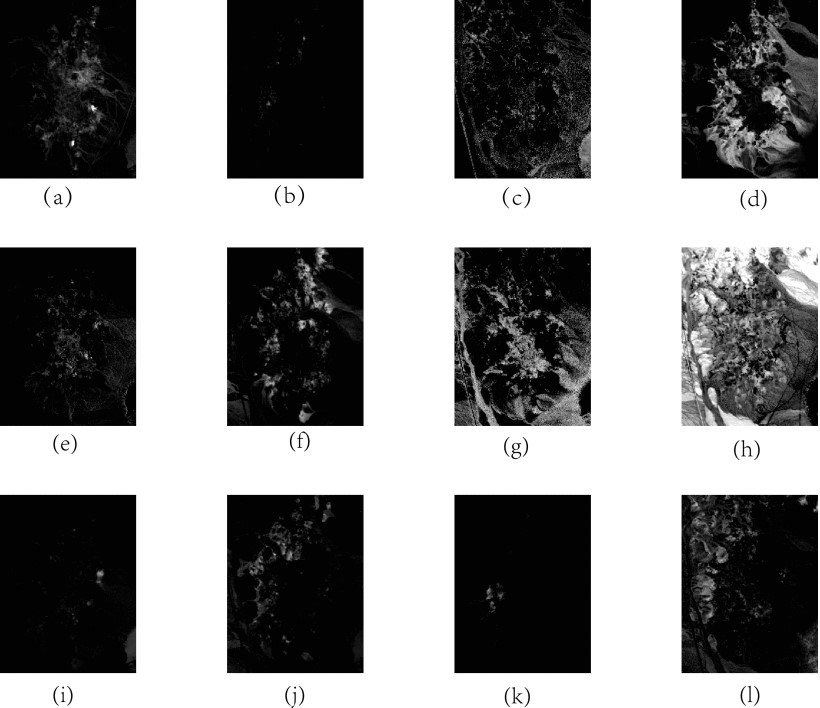Spatial information is one of the most important information of hyperspectral images (HSI). Low spatial resolution will cause mixture of pixels in images, which seriously hinders the application of HSI.
The unmixing methods based on linear mixing model largely ignore the specifics in hyperspectral data. The recent unmixing method using the similarity among pixels is sensitive to noise and fails in capturing subspace information of hyperspectral data. Furthermore, it is independent of the NMF framework. How to achieve high-quality unmixing?
A research team led by Prof. Dr. LU Xiaoqiang from Xi'an Institute of Optics and Precision Mechanics (XIOPM) of the Chinese Academy of Sciences (CAS) proposed and demonstrated a new hyperspectral unmixing method to enhance the precision of unmixing, according to a recent research article published in the journal IEEE Transactions on Geoscience and Remote Sensing.
 Abundance maps of different endmembers using SC-NMF on the AVIRIS Cuprite data. (Image by XIOPM)
Abundance maps of different endmembers using SC-NMF on the AVIRIS Cuprite data. (Image by XIOPM)
The method named subspace clustering constrained sparse nonnegative matrix factorization (NMF) can more accurately extract endmembers and correspond abundances.
During the research, they took advantage of the characteristics of reconstructed data itself achieving unmixing by extracting the spatial correlation of pixels and only retained the k largest values in each self-expression vector. In addition, they extract the endmembers by linearly combining of all pixels in spectral subspace.
The notable discovery is effective and superior compared with the state-of-the-art methods. It achieves simultaneous update of the similar graph and NMF, and mitigates the influence of noise in HSI. Moreover, it gives a reasonable physical significance to the endmembers.
Download: